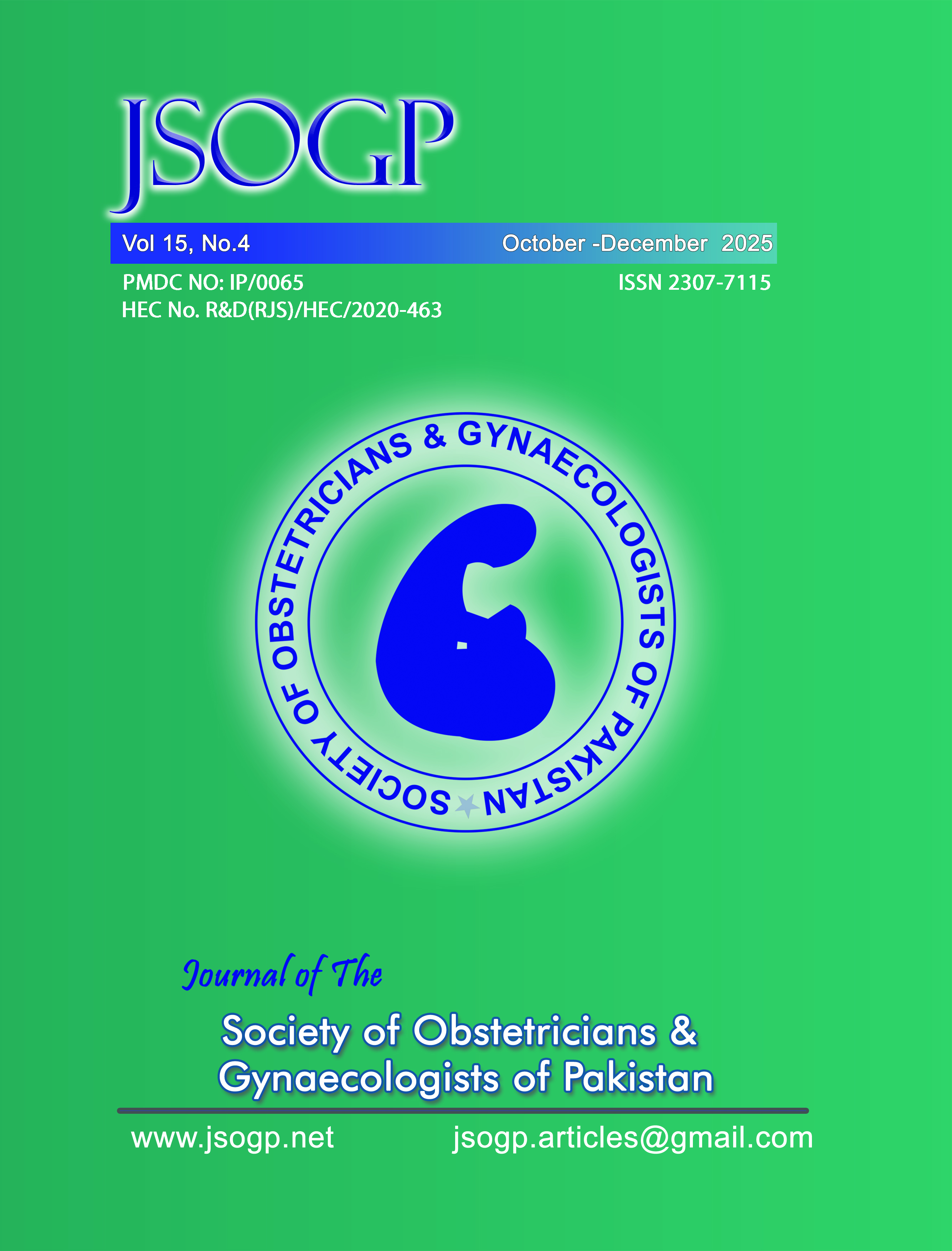Optimizing maternal care: The imperative analysis of rational blood transfusion uses in obstetrics
Abstract
Objective: To determine the frequency and indications of red cell transfusions in obstetrics and to evaluate their rational use according to established transfusion guidelines.
Methodology: This is a descriptive cross-sectional study conducted in the Department of Obstetrics and Gynecology at Akbar Niazi Teaching Hospital, Islamabad, Pakistan, over a period of two years, from January 2022 to January 2024. A total of 300 transfusions were administered in obstetric patients included in the study. All obstetric patients who required blood transfusion during pregnancy (including cases of miscarriage, ruptured ectopic pregnancy, molar pregnancy, antepartum hemorrhage), at the time of delivery, or within 7 days postpartum for obstetric causes such as postpartum hemorrhage or obstetric hysterectomy were included in the study.
Results: The mean age of transfused patients was 28.4±4.6 years (range: 19–40 years). Among them, 72 (24%) were primigravida and 228 (76%) were multigravida. The majority, 129 (43%), were at ≥36 weeks of gestation. The proportion of obstetric patients who required blood transfusion was 300 (11%), some patients received more than one component. Packed red blood cells (PRBCs) were the most commonly used, accounting for 192 transfusions (64%), followed by whole blood 144 (48%), random donor platelets 45 (15%), and fresh frozen plasma (FFP) 33 (11%). The leading indications were postpartum hemorrhage (PPH) in 43 cases (30%) and anemia during pregnancy in 37 cases (25.7%). Platelet transfusions were most often required for gestational thrombocytopenia (11 cases, 24.5%) and other medical disorders (22 cases, 48.9%).
Conclusion: Red cell transfusions were predominantly required for hemorrhagic and anemic conditions, while platelet and FFP use was linked to pregnancy-related complications. These findings highlight the need for improved antenatal care and adherence to rational transfusion practices.
Copyright (c) 2025 Journal of The Society of Obstetricians and Gynaecologists of Pakistan

This work is licensed under a Creative Commons Attribution-NonCommercial 4.0 International License.

